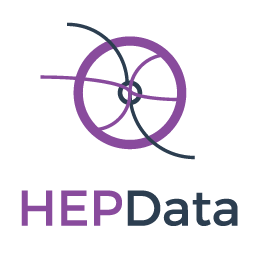Tips¶
YAML has its idiosyncrasies, like all input formats. We attempt to list some common problems here.
- Validate your files offline before uploading.
Try pasting your text into an online YAML validator (find several with Google) like YAML Lint . Or write some code that parses YAML using one of the available libraries for different languages.
Even better: install the Python hepdata-validator package which checks that the YAML files match the HEPData schema. You can then validate a zip, directory or single YAML file using the
hepdata-validatecommand. See the hepdata-validator docs for more details.The validator will be run automatically if you create your submission using the hepdata-lib package.
- Escape special characters.
Some characters in YAML need to be escaped, otherwise they cause errors when parsing. The two characters that cause most trouble for YAML are
:and-. Other problematic characters are{,}, and%. So if you use these characters in some description string, please make sure you put quotes around the whole string.- Ensure spaces after colons.
Another annoyance can be with spacing.
{symerror:0.4, label:stat}will give you an error. Change this to{symerror: 0.4, label: stat}however and everything will work nicely.- Use
---to separate tables in the submission.yaml file. A line
---separates YAML documents in the same file and is used to denote the start of a new table in the submission.yaml file. But don’t end the submission.yaml file with---otherwise a final (empty) table will be created, which might cause some problems.- Optionally include thumbnail images.
Thumbnail images of the original figures can be displayed alongside the tables as in the example above:
additional_resources: - {description: Image file, location: figFigure8A.png} - {description: Thumbnail image file, location: thumb_figFigure8A.png}
The image files should be included in the submitted archive. Note that thumbnail images need to have a filename beginning with
thumb_. If a separate thumbnail image file is not specified, the original image file will also be used as the thumbnail image. Valid image file types that will be displayed as thumbnails arepng,jpeg,jpg,tifforgif, but notpdf.- The table
nameshould not be too lengthy. There are no formal restrictions imposed on the
nameof a table, other than requiring it to be 64 characters or less. The standard convention is to use “Table 1”, “Table 2”, etc. However, it might be useful to give more descriptivenamevalues. Complex table names, in particular, containing special characters, were initially not completely supported by the HEPData code. These initial problems should now have been resolved.- Use only simple HTML in comments and descriptions
Limited HTML markup is allowed in the
commentanddescriptionfields, as shown in the following table. Disallowed HTML tags will be escaped, and disallowed HTML attributes will be removed. In some cases your HTML may not appear as expected; in this case please remove any disallowed tags and attributes and try again. If you are using < or > signs and they do not appear as expected, try escaping them, i.e. replace < with<and > with>.
Tag |
Allowed attributes |
|---|---|
|
|
|
|
|
|
|
|
|
|
|
|
|
|
|
|
|
|
|
|
|
|
|
|
|
|
|
|
|
|
|
|
|
|
|
|
|
|
|
|
|
- Check that your submission is not too large
HEPData was designed for interactive visualisation and conversion of mostly tabular data. This means that the size of submissions is restricted. A limit of 50 MB is currently imposed on each uploaded archive file. There is a client-side timeout on each request (such as a file upload) of 298s to avoid the 300s server timeout. Each YAML data file should be less than 10 MB in size. It should be checked that data tables close to this upper limit can be rendered sufficiently quickly in a web browser. The Uploader should also check that large submissions can be converted to other formats (YAML, YODA, ROOT, CSV) within the converter timeout limit of 220s. Large data tables can alternatively be provided as
additional_resourcesattached to either a whole submission or to a specific (possibly empty) table.- Remove unused files from the submission archive
The HEPData validation code will check that all files specified via the
data_fileandadditional_resourcesfields of thesubmission.yamlfile are included in the uploaded submission archive file. It will also check that there are no included extra files, so it is important when creating the archive file that no hidden system files are inadvertently included. For example, when using thetarcommand on macOS, extra files starting with._can be included in the archive file, but this behaviour can be switched off by setting theCOPYFILE_DISABLEenvironment variable, for example,export COPYFILE_DISABLE=1.

